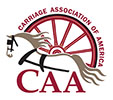As Germany prepared for WWI they used mobile kitchens to feed soldiers. The cookers quickly became known as Goulash Cannons or ‘gulaschkanone’ as the furnace tube is reminiscent of a cannon barrel. Soon France, Australia, England, and the United States were creating their own version of the Goulash Cannon.
There had been many previous attempts to create the perfect mobile, horse-drawn, kitchen. During the 1800s a young German named Karl Rudolf Fissler was intrigued by steam engines and how steam could be used. By 1892, he developed the Feldkochherd or Feldkuche, most commonly known as the mobile field kitchen. Fissler’s field kitchen made complete menus possible due to its unique boiler system.
Heat is a major issue when considering a horse-drawn kitchen. Fissler solved this by putting a lining of asbestos fiber under the boiler system, allowing heat without burning the vehicle. To further combat the heat issue, the actual cooker was hauled separately from the caisson or limber (think military version of a forecart). The limber carried cooking supplies. As the cooking system was entirely self-contained the field kitchen could continue cooking while on the move.
American kitchens consisted of a stove and limber, with the stove containing a bake oven and three kettles. The limber contained kettles, water containers and bread boxes.
By 1918 American troops in France were eating about 9,000,000 pounds of food every day.
America’s Munitions 1917-1918 Report of Benedict Crowell, The Assistant Secretary of War, Director of Munitions
Over 25,000 mobile kitchens were used by American troops in WWI, 10,000 of which were animal-drawn. They were called War Kitchens, Liberty Kitchens or Rolling Kitchens. By 1918 American troops in France were eating about 9,000,000 pounds of food every day according to a report by Benedict Crowell, Assistant Secretary of War.
There were several U.S. companies who made war kitchens for American forces. The American Expeditionary Force used kitchens made by Tappan Range Company. The Kentucky Wagon Manufacturing Company received a contract for 4,000 portable kitchen wagons according to a 1915 announcement, making a total of 12,000 wagons made by them. The contract value of the first 8,000 war kitchens was between $200,000 and $250,000. There was also brisk business in replacement parts.

How rugged were the vehicles? The Australian version of the cooker was named the Wiles Army Steam Cooker and it was designed to travel up to speeds of 35mph. Most were built to travel at normal convoy speed of 25 mph and could sustain a fire while on the move. within 20 minutes of stopping the cooker would be ready to prepare a meal. Most cookers were designed to feed 500 men at a time but some smaller versions fed 150-250 men.
Interested in knowing more about Goulash Cannons?
Radio Interview with Horses In the Morning – http://www.horsesinthemorning.com/driving-all-about-trends-trends-in-driving-training-fashion-and-podcasts-and-the-goulash-cannon-for-jan-3-2019/
Resources:
Gulaschkanoene Kicked Off in 1914, www.rhein-zeitung.de
Goulash Cannon by Kathleen Haak – The Carriage Journal, August 2017
Diary of Friedrich von Kurkowski-Eichen
The Wiles Cooker http://ballarat19141918.blogspot.com/2014/08/the-wiles-cooker.html


